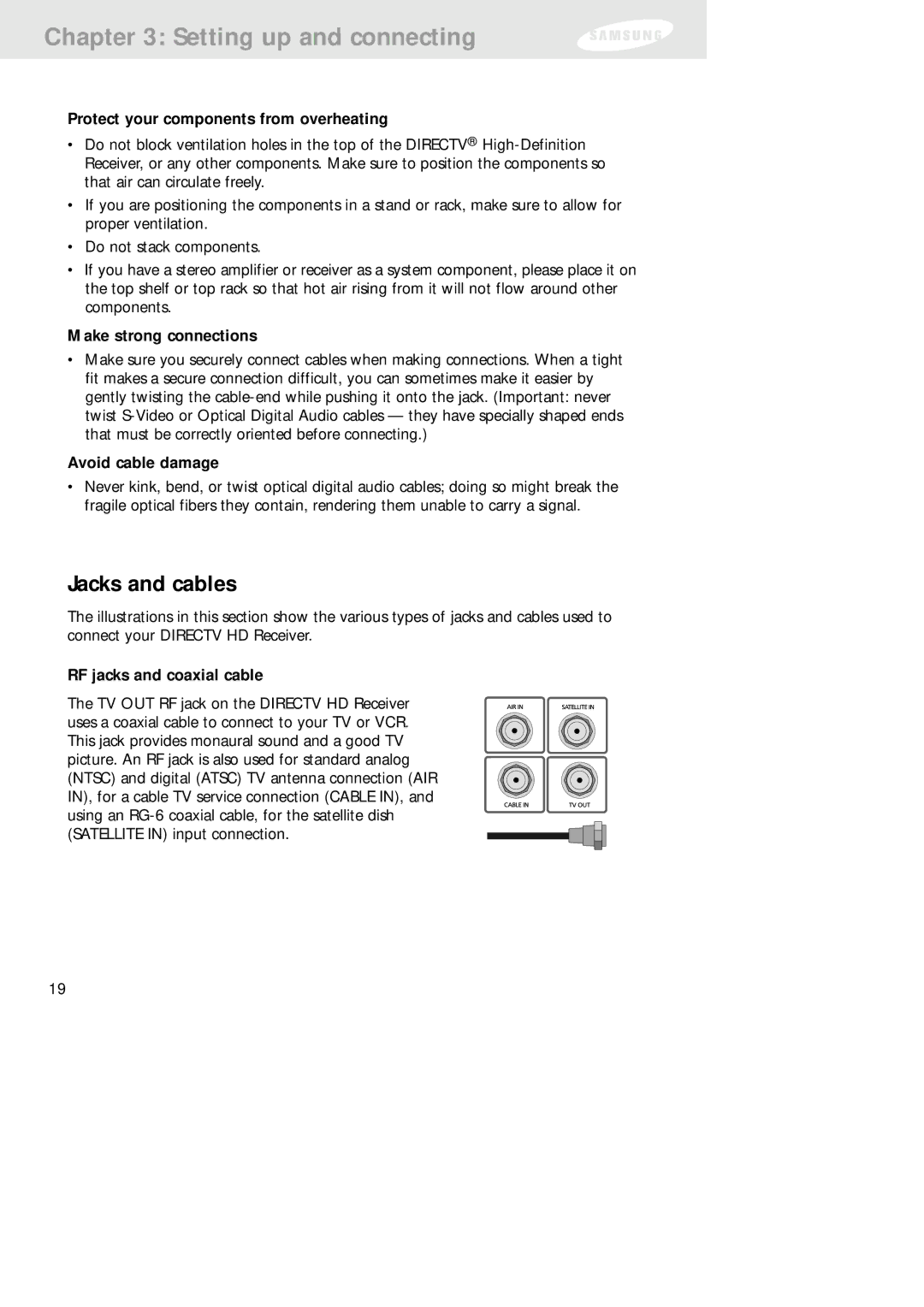
Chapter 3: Setting up and connecting
Protect your components from overheating
•Do not block ventilation holes in the top of the DIRECTV®
•If you are positioning the components in a stand or rack, make sure to allow for proper ventilation.
•Do not stack components.
•If you have a stereo amplifier or receiver as a system component, please place it on the top shelf or top rack so that hot air rising from it will not flow around other components.
Make strong connections
•Make sure you securely connect cables when making connections. When a tight fit makes a secure connection difficult, you can sometimes make it easier by gently twisting the
Avoid cable damage
•Never kink, bend, or twist optical digital audio cables; doing so might break the fragile optical fibers they contain, rendering them unable to carry a signal.
Jacks and cables
The illustrations in this section show the various types of jacks and cables used to connect your DIRECTV HD Receiver.
RF jacks and coaxial cable
The TV OUT RF jack on the DIRECTV HD Receiver uses a coaxial cable to connect to your TV or VCR. This jack provides monaural sound and a good TV picture. An RF jack is also used for standard analog (NTSC) and digital (ATSC) TV antenna connection (AIR IN), for a cable TV service connection (CABLE IN), and using an
19
